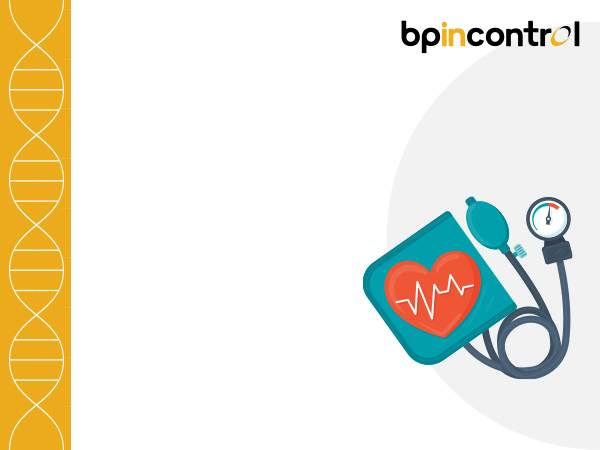How to check BP at Home: Beginner’s Guide

Table of Contents
How to check BP at home?
If you are wondering how to check your BP at home, we are here to help you every step of the way. Monitoring your blood pressure at home is a simple yet essential practice that empowers you to take charge of your cardiovascular health. Whether you’re managing a pre-existing condition, tracking your progress on a fitness journey, or simply staying proactive about your well-being, learning to measure your blood pressure accurately can provide valuable insights into your overall health.
In this guide, we will walk you through the process of how to check your bp at home, equip you with the necessary knowledge, and offer practical tips to ensure reliable readings. So, grab your blood pressure monitor and let’s embark on this journey to a healthier and more informed you!
How often should you measure your blood pressure?
Bp check at home is a crucial component of managing hypertension and maintaining overall cardiovascular health. Regular measurements provide valuable information about your blood pressure trends and response to lifestyle changes or medications.
By following the guidelines for how to check your blood pressure at home and how often, you can gain an insight into your health:
- Consult Your Healthcare Provider: Before starting home bp monitoring, it’s essential to consult your healthcare provider. They can determine the appropriate monitoring schedule based on your individual health condition, risk factors, and treatment plan.
- Establish a Routine: Once you have your healthcare provider’s guidance, create a consistent monitoring routine. For most individuals, measuring blood pressure in the morning and evening is a common practice. Try to measure it around the same time each day.
- Frequency for Well-Controlled Blood Pressure: If your blood pressure is well-controlled and stable, your healthcare provider may recommend checking it at least twice a month. This frequency allows for regular monitoring without excessive measurements.
- Frequency for Elevated Blood Pressure: If your blood pressure is elevated but not severely high, your healthcare provider may suggest more frequent monitoring, such as several times a week. This helps track changes and assess the impact of lifestyle modifications.
- Frequency for Uncontrolled or High Blood Pressure: Individuals with uncontrolled or high blood pressure may require daily monitoring to closely manage their condition. Frequent measurements can help identify any sudden spikes or fluctuations that need prompt attention.
- During Medication Adjustments: When starting or adjusting medications, your healthcare provider may recommend more frequent monitoring to gauge their effectiveness and ensure your blood pressure stays within the target range.
- During Stressful Periods or Illness: Stress and illness can influence blood pressure. During such periods, more frequent monitoring can help identify any temporary changes and guide appropriate interventions.
- Long-Term Monitoring: For individuals with stable, well-managed blood pressure over time, your healthcare provider may recommend less frequent monitoring. However, it’s essential to remain vigilant about any changes in your health and be prepared to increase monitoring if needed.
Before Checking Your Blood Pressure
Before checking your blood pressure at home, it’s essential to prepare properly to ensure accurate readings and reliable monitoring. Home bp monitoring is a valuable tool for managing hypertension and understanding your health but it should be done properly for accurate results.
Here are some essential steps to follow before measuring your blood pressure:
- Choose the Right Blood Pressure Monitor:Select a validated and properly calibrated blood pressure monitor that suits your needs. There are two main types of blood pressure monitors:
- Upper Arm Monitors: These are commonly recommended for their accuracy and reliability. They come with a cuff that wraps around your upper arm and is inflated to measure your blood pressure.
- Wrist Monitors: These are more portable but may provide slightly less accurate readings compared to upper-arm monitors. When using a wrist monitor, ensure your arm is positioned at heart level for better accuracy.
- Rest for a Few Minutes:Before taking your blood pressure, sit quietly and rest for about 5 minutes. Avoid any strenuous activity, caffeine, or smoking, as these factors can temporarily raise your blood pressure.
- Avoid Talking or Movement:During the measurement, remain still, and avoid talking. Talking or moving can affect the accuracy of the reading.
- Take Multiple Measurements:For the most reliable results, take two to three consecutive measurements, with a brief rest in between. Record all the readings in a log to share with your healthcare provider.
- Understand Systolic and Diastolic Pressure:Blood pressure readings consist of two numbers:
- Systolic Pressure: The top number, which represents the pressure in your arteries when your heart beats or contracts.
- Diastolic Pressure:The bottom number, which represents the pressure in your arteries when your heart is at rest between beats.
- Identify Inaccurate Readings:Sometimes, factors such as an irregular heartbeat or improper cuff placement can lead to inaccurate blood pressure readings. If you notice unusual or inconsistent results, consult your healthcare provider for guidance.
How to check your bp at home using a home monitor?
Knowing how to check bp at home with a machine is a straightforward process that empowers you to monitor your cardiovascular health regularly. It is essential to follow the correct steps to ensure accurate readings and reliable tracking of your blood pressure.
Here’s a step-by-step guide on how to measure your blood pressure at home using a blood pressure monitor:
Step 1: Select a Validated Blood Pressure Monitor:
Choose a reliable and validated blood pressure monitor from a reputable brand. Ensure that the monitor is properly calibrated to provide accurate readings.
Step 2: Prepare for Measurement:
Sit in a comfortable and quiet room. Rest for at least 5 minutes before starting the measurement. Avoid doing anything that will elevate your blood pressure such as drinking caffeine, smoking, and any strenuous activity before the measurement.
Step 3: Proper Cuff Placement:
For upper arm monitors, place the cuff on your bare upper arm, about 1 inch above the bend of your elbow. Ensure that the cuff fits snugly but not too tight. Put it on in such a way that only two fingers fit under the top border of the cuff. When the cuff expands, it shouldn’t pinch your skin.
Step 4: Position Your Arm Correctly:
Rest your arm on a flat surface, such as a table, with your palm facing upward. The cuff should be at the same level as your heart. Sit up straight and avoid crossing your legs.
Step 5: Take the Measurement:
Press the start button on the blood pressure monitor to begin the measurement. The cuff will inflate and gradually deflate while it measures your blood pressure. Stay still and avoid talking during the measurement.
Step 6: Record the Reading:
Once the measurement is complete, the monitor will display your blood pressure reading on the screen. Take note of both the systolic pressure (top number) and diastolic pressure (bottom number).
Step 7: Take Multiple Readings:
For the most accurate results, take two to three consecutive readings, with a brief rest in between. Record all the readings in a log to track changes over time.
Step 8: Consult Your Healthcare Provider:
Share your home blood pressure log with your healthcare provider during your regular check-ups. This will enable them to assess your blood pressure trends, make necessary adjustments to your treatment plan, and provide guidance on managing your blood pressure.
Tips for measuring your blood pressure accurately at home
If you are wondering how to measure bp at home accurately and effectively, here are some valuable tips to help you:
- Choose a Reliable Blood Pressure Monitor: Select a validated and properly calibrated blood pressure monitor from a reputable brand. Ensure that the monitor has been clinically tested for accuracy and is suitable for your specific needs (e.g., upper arm monitor or wrist monitor).
- Empty Your Bladder: A full bladder can affect blood pressure readings. To ensure accurate measurements, empty your bladder before taking your blood pressure.
- Correct Arm Positioning: Keep your arm and wrist (for wrist monitors) at heart level during the measurement. Rest your arm on a flat surface, such as a table, with your palm facing upward.
- Remain Still and Silent: Avoid talking or moving during the measurement. Movement and conversation can influence blood pressure readings and lead to inaccuracies
- Measure at the Same Time of Day: For consistency, measure your blood pressure at the same time of day, preferably in the morning and evening.
- Avoid the “White Coat” Effect: Some individuals experience elevated blood pressure when in a medical setting due to anxiety or stress (known as the white coat syndrome). To mitigate this, become familiar with the home monitoring process to achieve more accurate readings.
- Use an Average: If you take multiple readings, calculate the average to obtain a more reliable blood pressure measurement.
Apart from these, you can also follow a couple of home remedies to control high blood pressure instantly such as:
- Eat Potassium-Rich Foods: Consuming foods rich in potassium, such as bananas, oranges, avocados, and sweet potatoes, can help balance sodium levels in the body and support healthy blood pressure.
- Dark Chocolate: Dark chocolate, in moderation, may have a mild blood pressure-lowering effect due to its high content of flavonoids, which can help dilate blood vessels.
- Garlic: Garlic has been associated with mild blood pressure-lowering effects. Including fresh garlic or garlic supplements in your diet may help support cardiovascular health.
- Consume Omega-3 Fatty Acids: Incorporate foods rich in omega-3 fatty acids, such as fatty fish (salmon, mackerel) and flaxseeds, which may have a positive effect on blood pressure.
- Reduce Sodium Intake: Limiting sodium (salt) intake in your diet can help prevent fluid retention and lower blood pressure. Avoid processed and high-sodium foods and opt for fresh, whole foods instead.
Conclusion
Knowing how to measure bp at home is an empowering skill that allows you to actively participate in your cardiovascular health management. Home blood pressure monitoring provides valuable insights into blood pressure trends, responses to lifestyle changes, and the effectiveness of prescribed treatments.
If you are looking to take control of your blood pressure and seek professional guidance, finding a knowledgeable and experienced physician is essential. A personalized treatment plan tailored by a qualified healthcare provider can help you manage your blood pressure effectively. To find a physician near you, you can visit BP in Control’s “Find a Physician” page. Connecting with a reputable physician through this platform will ensure that you receive the appropriate care and attention necessary to address your specific health needs.
Taking charge of one’s health is a step towards a healthier and more fulfilling life!
Disclaimer
The information contained in this article is to educate, spread awareness in relation to hypertension and other diseases to the public at large. The contents of this article are created and developed by BPinControl.in through its authors, which has necessary, authorisations, license, approvals, permits etc to allow usage of this articles on The Website. The views and opinions expressed in this article are views, opinions of the respective authors and are independently endorsed by doctors. Although great care has been taken in compiling and checking the information in this article, The Website shall not be responsible, or in any way liable for any errors, omissions or inaccuracies in this article whether arising from negligence or otherwise, or for any consequences arising therefrom. The content of this article is not a substitute for any medical advice. The Website shall not be held responsible or liable for any consequence arising out of reliance on the information provided in the article.


Comments (0)
No comments found.Add your comment